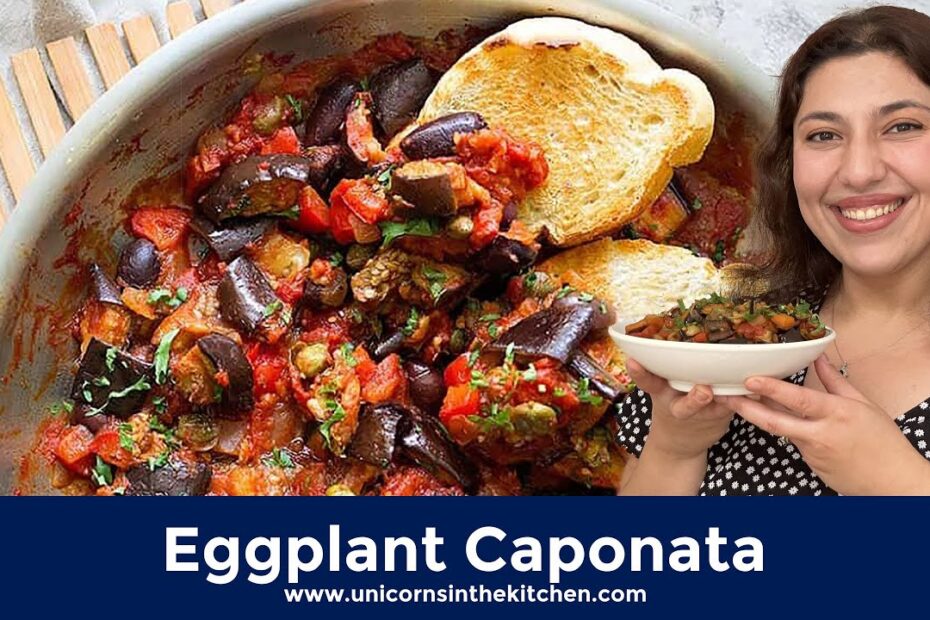Introduction
Have you ever craved a dish that’s both rich in flavor and versatile enough to accompany any meal? Look no further than Eggplant Caponata! This traditional Italian recipe combines the earthy goodness of eggplant with the tangy sweetness of tomatoes and the subtle bite of capers and vinegar. Whether you’re a seasoned chef or a beginner in the kitchen, this dish is sure to impress both your taste buds and your guests. In this article, we’ll dive into everything you need to know about making the perfect Eggplant Caponata, from selecting the freshest ingredients to mastering the cooking techniques.
Introduction to Eggplant Caponata
Eggplant Caponata, also known simply as Caponata, originates from Sicily, Italy. It’s a savory-sweet relish or side dish that’s bursting with Mediterranean flavors. Traditionally, it’s served as an antipasto, alongside crusty bread or crackers. However, it can also be enjoyed as a topping for bruschetta, tossed with pasta, or even as a filling for sandwiches.
Ingredients You’ll Need
Before you embark on your culinary adventure, gather the following ingredients:
- 2 large eggplants, diced
- 1 onion, finely chopped
- 2 cloves of garlic, minced
- 1 can (14 oz) of diced tomatoes
- ¼ cup of green olives, pitted and sliced
- 2 tablespoons of capers, drained
- 2 tablespoons of red wine vinegar
- 2 tablespoons of sugar
- ¼ cup of fresh basil, chopped
- Salt and pepper to taste
- Olive oil for cooking
Selecting the Perfect Eggplant
When choosing eggplants for your Caponata, opt for ones that are firm, glossy, and heavy for their size. Avoid eggplants that are wrinkled or have soft spots, as they may be overripe. Additionally, smaller eggplants tend to have fewer seeds and a sweeter flavor, making them ideal for this recipe.
Preparing the Eggplant
To ensure the perfect texture and flavor, it’s essential to properly prepare the eggplant. Start by dicing the eggplant into uniform cubes, about 1-inch in size. Then, sprinkle the cubes with salt and let them sit in a colander for 30 minutes. This process helps draw out any bitterness from the eggplant.
Cooking the Caponata
- Heat olive oil in a large skillet over medium heat.
- Add the diced eggplant and cook until golden brown and tender, about 8-10 minutes.
- Remove the eggplant from the skillet and set it aside.
- In the same skillet, add a bit more olive oil if needed, then sauté the onion and garlic until soft and translucent.
- Stir in the diced tomatoes, olives, and capers, and cook for an additional 5 minutes.
- Return the cooked eggplant to the skillet and stir in the red wine vinegar and sugar.
- Let the mixture simmer for 10-15 minutes, allowing the flavors to meld together.
- Season with salt and pepper to taste, then remove from heat and stir in the chopped basil.
Serving Suggestions
Eggplant Caponata is best served at room temperature or slightly chilled. You can enjoy it as a standalone appetizer, served with crostini or crackers. Alternatively, pair it with grilled meats or fish for a hearty main course. For a vegetarian option, toss it with cooked pasta or spread it on toasted bread for a delicious bruschetta.
Storing and Reheating
Store any leftover Caponata in an airtight container in the refrigerator for up to 5 days. To reheat, simply warm it gently in a skillet over low heat or microwave it in short intervals until heated through. Add a splash of olive oil or vinegar to revive the flavors if necessary.
Conclusion
In conclusion, Eggplant Caponata is a delightful dish that embodies the essence of Italian cuisine. With its robust flavors and versatility, it’s a must-try for any food enthusiast. Whether you’re hosting a dinner party or simply craving a taste of Italy, this recipe is sure to satisfy.
FAQs (Frequently Asked Questions)
1. Can I use canned eggplant instead of fresh for this recipe?
While fresh eggplant is preferred for its flavor and texture, you can substitute canned eggplant if fresh isn’t available. Just be sure to drain and rinse the canned eggplant before using it in the recipe.
2. Is Eggplant Caponata suitable for vegans and vegetarians?
Yes, Eggplant Caponata is entirely plant-based and is suitable for both vegans and vegetarians. It’s a great option for those following a meat-free diet.
3. Can I freeze Eggplant Caponata for later use?
While Eggplant Caponata can be frozen, the texture may change slightly upon thawing, as the eggplant tends to become softer. However, the flavor will remain intact. Be sure to store it in an airtight container and thaw it in the refrigerator before reheating.
4. What other ingredients can I add to customize my Caponata?
Feel free to get creative with your Caponata by adding ingredients such as pine nuts, raisins, bell peppers, or even a splash of balsamic vinegar for extra depth of flavor.
5. Can I make Eggplant Caponata ahead of time?
Yes, Eggplant Caponata actually tastes better when made ahead of time, as it allows the flavors to develop and intensify. You can prepare it up to 2 days in advance and store it in the refrigerator until ready to serve.
